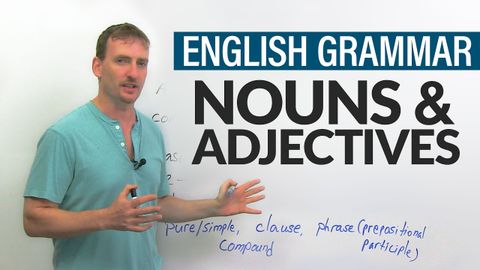
Subtitles & vocabulary
Parts of Speech in English Grammar: NOUNS & ADJECTIVES
00
Summer posted on 2020/07/30Save
Video vocabulary
specific
US /spɪˈsɪfɪk/
・
UK /spəˈsɪfɪk/
- Adjective
- Precise; particular; just about that thing
- Concerning one particular thing or kind of thing
A2
More recognize
US /ˈrek.əɡ.naɪz/
・
UK /ˈrek.əɡ.naɪz/
- Transitive Verb
- To accept the truth or reality of something
- To consider something as important or special
A2TOEIC
More compliment
US /ˈkɑmpləmənt/
・
UK /'kɒmplɪmənt/
- Noun (Countable/Uncountable)
- Remark saying someone looks nice, plays well, etc.
- A formal expression of respect or admiration.
- Transitive Verb
- To say someone looks nice, plays well, etc.
B2
More description
US /dɪˈskrɪpʃən/
・
UK /dɪˈskrɪpʃn/
- Noun
- Explanation of what something is like, looks like
- The type or nature of someone or something.
A2TOEIC
More Use Energy
Unlock All Vocabulary
Unlock pronunciation, explanations, and filters
